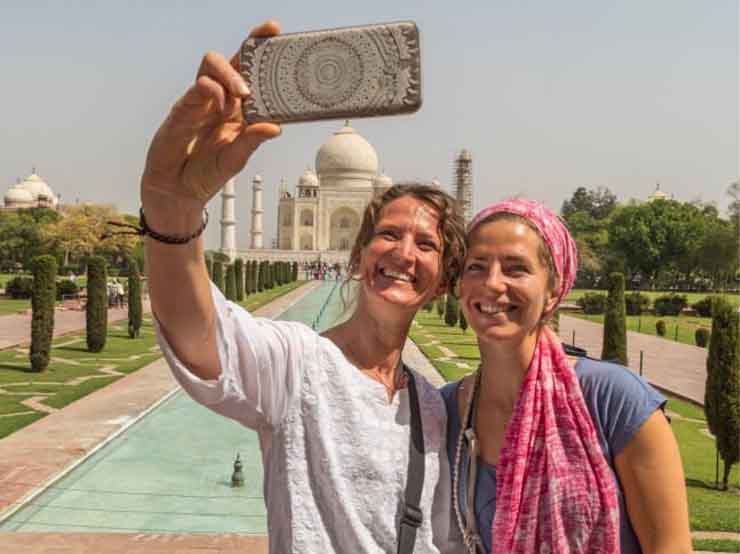The Taj Mahal is admired worldwide as a symbol of love and beauty. Yet its design was not created in isolation. Much of its inspiration came from Humayun’s Tomb in Delhi, built almost a century earlier. The tomb introduced features later perfected in the Taj Mahal, such as the Charbagh gardens and the hasht-behesht layout.
Humayun’s Tomb: A Turning Point
Built in 1570, Humayun’s Tomb was the first garden-tomb in India. It was commissioned by Empress Bega Begum, the widow of Humayun. The monument blended Persian style with local craftsmanship, creating a new Mughal identity. Its red sandstone walls with white marble accents set the stage for later Mughal masterpieces.
The Charbagh Gardens
Humayun’s Tomb introduced the Charbagh garden plan to India. The term means “four gardens.” It divides the grounds into four equal parts using water channels and walkways. These quadrants represent the four rivers of paradise described in Islamic tradition.
The Taj Mahal carried this design forward with unmatched refinement. Its watercourses reflect the marble dome, doubling the beauty of the monument. The layout also creates a sense of peace and symmetry, a hallmark of Mughal garden design.
The Hasht-Behesht Plan
Another feature shared by both monuments is the hasht-behesht plan, or “eight paradises.” In this design, a central chamber is surrounded by eight smaller rooms. The arrangement symbolizes harmony and the spiritual concept of paradise.
Humayun’s Tomb was the first structure in India to use this layout. The Taj Mahal adapted it in marble, with perfect proportions and delicate ornamentation. Its central hall holds the symbolic cenotaphs of Mumtaz Mahal and Shah Jahan, with surrounding spaces that balance the whole structure.
From Delhi to Agra
The journey from Humayun’s Tomb to the Taj Mahal reflects the growth of Mughal architecture. The early Delhi tomb was bold and experimental. The Taj Mahal in Agra became its refined successor, unmatched in grace and craftsmanship.
Visiting the Taj Mahal is not only about admiring its beauty. It is also about tracing this story of evolution, from the first Mughal garden tomb to the world’s most admired mausoleum.
Book Your Tickets Easily
The Taj Mahal is more than a monument—it is an experience of history, love, and artistry. To plan your visit smoothly, you can book tickets online at Ticketstajmahal.com. Secure your entry in advance and witness the living legacy of Mughal architecture.










Comment (0)